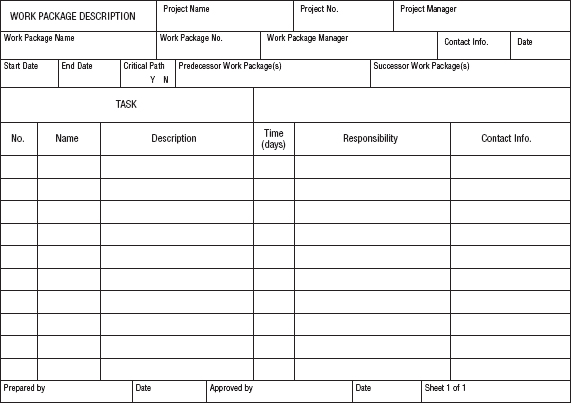Putting It All Together
This chapter discussed the team, its membership, the skills needed of the members, and the rules that the team must follow as it goes about the work of the project. Even though you have done your best to put the team together and have set and agreed on the operating rules, much is yet to be done. The team needs to learn how to work together by actually working together. Mistakes will be made, procedures will not always be followed as intended, and the first few team meetings will be clumsy. Learning is taking place, and it must be allowed to do so. The team is passing through a stage called norming, where it is learning to work together as teams should. It is a natural phase of development. Unfortunately, you can't wait for the team to become a lean, mean machine. The work of the project must begin.
Figure 6-7: Work package description report

Today's contemporary project world adds other challenges. Perhaps the major challenge is that teams are seldom co-located. The members might be in different buildings, states, countries, and even continents. Holding effective meetings these days means scheduling to accommodate differing time zones. I have experienced as many as 12 time zones separating team members' locations. Teams often comprise several cultures whose work habits and social interactions are often quite different than you might be used to. Your not ...
Get Effective Project Management: Traditional, Agile, Extreme, Sixth Edition now with the O’Reilly learning platform.
O’Reilly members experience books, live events, courses curated by job role, and more from O’Reilly and nearly 200 top publishers.

